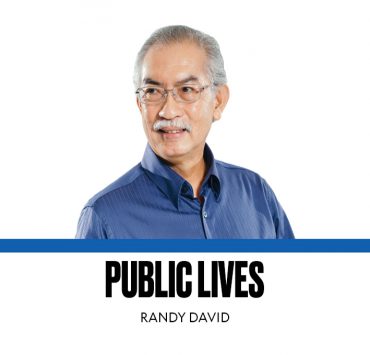Building trust for NCAP 2.0

Just one week since the No Contact Apprehension Policy (NCAP) was reimplemented, the Metropolitan Manila Development Authority (MMDA) claimed it has successfully deterred traffic violations based on data gathered before and after the controversial measure took effect.
The agency recorded 1,112 infractions on the first day of implementation, compared to 3,982 violations the previous week. On the fourth day, the violations were down to 858. Most of them were disregarding traffic signs, using the Edsa bus lane and motorcycle lane, and loading-unloading offenses.
The MMDA earlier said reinstating NCAP was urgently needed, especially in anticipation of the two-year rehabilitation of Edsa, which starts on June 13. “The MMDA expects a significant diversion of vehicles to interior roads and alternate routes. Given the sheer volume of vehicles and the complexity of Metro Manila’s road network, the limited deployment of MMDA traffic enforcers and deputized local officers is grossly inadequate to manage the anticipated surge in traffic,” it said in its motion for reconsideration filed early last month.
The contentious traffic scheme was enforced after the Supreme Court partially lifted a temporary restraining order against its implementation. The high court ruling, however, only allows the MMDA, not local government units in Metro Manila, to enforce the scheme. Some of the areas covered include Edsa, C-5 Road, Katipunan Avenue, Marcos Highway, Roxas Boulevard, Commonwealth Avenue, Quezon Avenue, West Avenue, E. Rodriguez Avenue, and Buendia Avenue.
Flawed system
Many motorists have remained skeptical of NCAP, including how the infractions are reviewed and recorded, and how violators are informed. One of the contentions of those who sought to suspend the scheme three years ago was its lack of due process and the flawed system of informing violators.
This time, MMDA said, it has set up mechanisms to correct past issues, including the manual review of violations that were recorded and setting up a dedicated adjudication department for those who wish to contest a notice of violation. It assured he public that any erroneous violations will be invalidated. It has also put in place an online payment channel to make it easier for violators to settle fines. A petitioner against NCAP claimed in 2023 that he was not informed of having thousands in outstanding fines for several traffic violations until it was time for him to renew the registration of his vehicle.
Yet these issues continue to hound the scheme and are fresh in motorists’ minds. As Inquirer columnist Anna Cristina Tuazon noted in her column, “The uncertainty of NCAP” (Safe Space, 5/29/25), she had difficulty booking a ride on the first day of implementation because, per her driver, many refused to drive that day over concerns about the NCAP’s fairness.
Public confusion
A day after NCAP was reimplemented, 1-Rider party list Rep. Ramon Rodrigo Gutierrez filed a House resolution seeking to defer it until issues have been resolved.
“The intention behind NCAP is commendable, but the lifting of the TRO does not cure the existing problems. Its current implementation is flawed and unfairly impacts our motorists. We need clear road signage, transparent ownership transfer processes, and a system that respects due process to ensure fairness,” Gutierrez said.
He warned that there will be “public confusion, erosion of trust, and potential legal challenges” if these issues are unresolved, especially in the absence of updated legislative oversight or improved operational guidelines.
Other lawmakers like Senate President Chiz Escudero have raised similar concerns earlier, including the need for clear evidence to support a traffic citation, clear and consistent traffic rules and visibility of signage, and faster delivery of notices.
The MMDA must address these issues and improve implementation to gain public confidence and acceptance.
Instilling discipline
One benefit from NCAP, as many have pointed out, is that it can deter drivers from committing traffic violations, knowing that there are high-definition cameras spread in strategic areas along Metro Manila’s major throughfares. Photos and videos of vehicles, particularly motorcycles, seemingly observing designated lanes on Commonwealth Avenue reinforced the need for the NCAP to put order in our streets.
It also reduces the incidence of bribery and extortion because there are minimal interactions between enforcers and motorists. Drivers need not fear that corrupt enforcers, waiting for an opportunity, will suddenly pop up out of nowhere to issue a ticket.
If implemented properly, NCAP could be an effective and efficient tool in instilling discipline among drivers and reducing corruption on the roads. But it must be complemented by better roads, clear and visible traffic signs, and most importantly, consistent and uniform traffic rules across cities and municipalities. Only if these are all worked out can NCAP truly pave the way for an improved traffic experience on Metro Manila’s tricky roads.





















